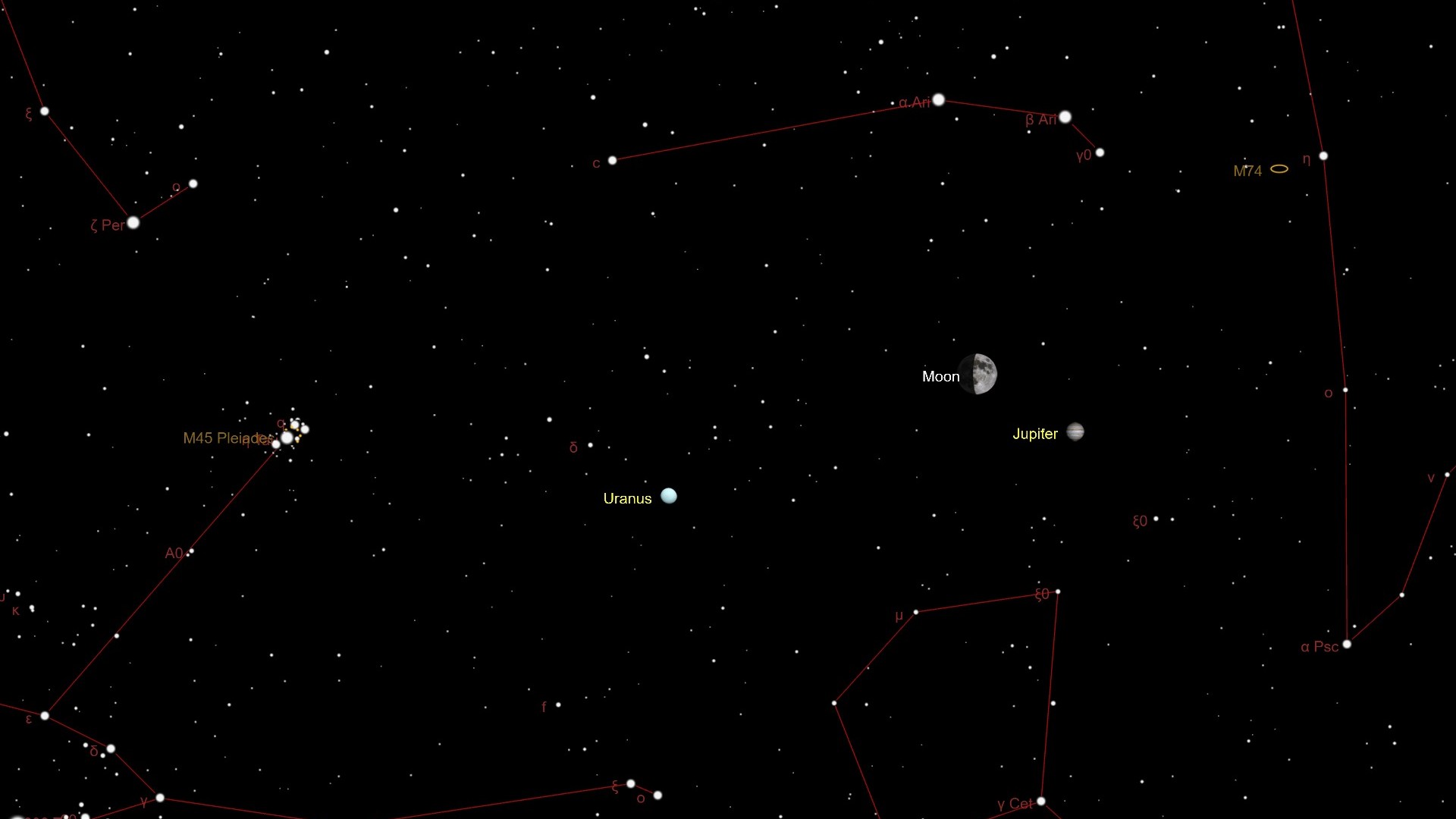See a bright half moon meet up with Jupiter in the night sky tonight
The pairing of the moon and Jupiter will be visible and high in the sky as soon as the sun sets.

Two skywatching favorites will meet up in the clear winter night sky tonight.
The moon and Jupiter will appear close together in the Aries constellation, offering the chance to see five moons at once through the right binoculars. Jupiter's four largest satellites, called the Galilean moons, will appear in pairs on either side of the largest planet in our solar system.
The moon, meanwhile, will be just seven days past new moon in a bright waxing gibbous phase, appearing 59% illuminated as it heads toward the first full moon of 2024, the Full Wolf Moon, which occurs on Jan. 25.
Related: Night sky, January 2024: What you can see tonight

Looking for a telescope to see the moons of Jupiter? We recommend the Celestron Astro Fi 102 as the top pick in our best beginner's telescope guide.
The pairing of the moon and Jupiter will be visible as soon as the sun sets. Both will be fairly high in the sky at sunset and unmistakable; look below and to the right of the moon to find a bright, pale yellow orb. That's Jupiter. Viewing the planet through binoculars or a telescope should reveal its four largest moons: Io, Europa, Ganymede and Callisto.
Jupiter and the moon should remain visible throughout the evening until they set around 2 a.m. EST (0700 GMT) in the early hours of Jan. 19.
While you're gazing at the moon and Jupiter, look just east of the pairing to find another one of the most popular night sky sights, the Pleiades star cluster, also known as Messier 45, M45 and the Seven Sisters.
Get the Space.com Newsletter
Breaking space news, the latest updates on rocket launches, skywatching events and more!
And just below the Pleiades is one of the most recognizable constellations of the Northern Hemisphere: Orion, the Hunter. Binoculars or a telescope will bring out the Orion Nebula, found close to the stars that make up the "sword" hanging from the Hunter's belt.

If you are hoping to catch a close-up look at the moon, Jupiter or the Orion Nebula in the night sky and don't have all the gear you need (or want!), our guides to the best telescopes and best binoculars are a great place to help you find what you're looking for.
And if you're looking to snap photos of the moon, Jupiter or just the night sky in general, check out our guides on how to photograph the moon and how to photograph the planets as well as our breakdowns of the best cameras for astrophotography and best lenses for astrophotography.
Editor's Note: If you snap an image of the moon's meet-up with Jupiter and would like to share it with Space.com’s readers, send your photo(s), comments, and your name and location to spacephotos@space.com.
Join our Space Forums to keep talking space on the latest missions, night sky and more! And if you have a news tip, correction or comment, let us know at: community@space.com.

Brett is curious about emerging aerospace technologies, alternative launch concepts, military space developments and uncrewed aircraft systems. Brett's work has appeared on Scientific American, The War Zone, Popular Science, the History Channel, Science Discovery and more. Brett has English degrees from Clemson University and the University of North Carolina at Charlotte. In his free time, Brett enjoys skywatching throughout the dark skies of the Appalachian mountains.









